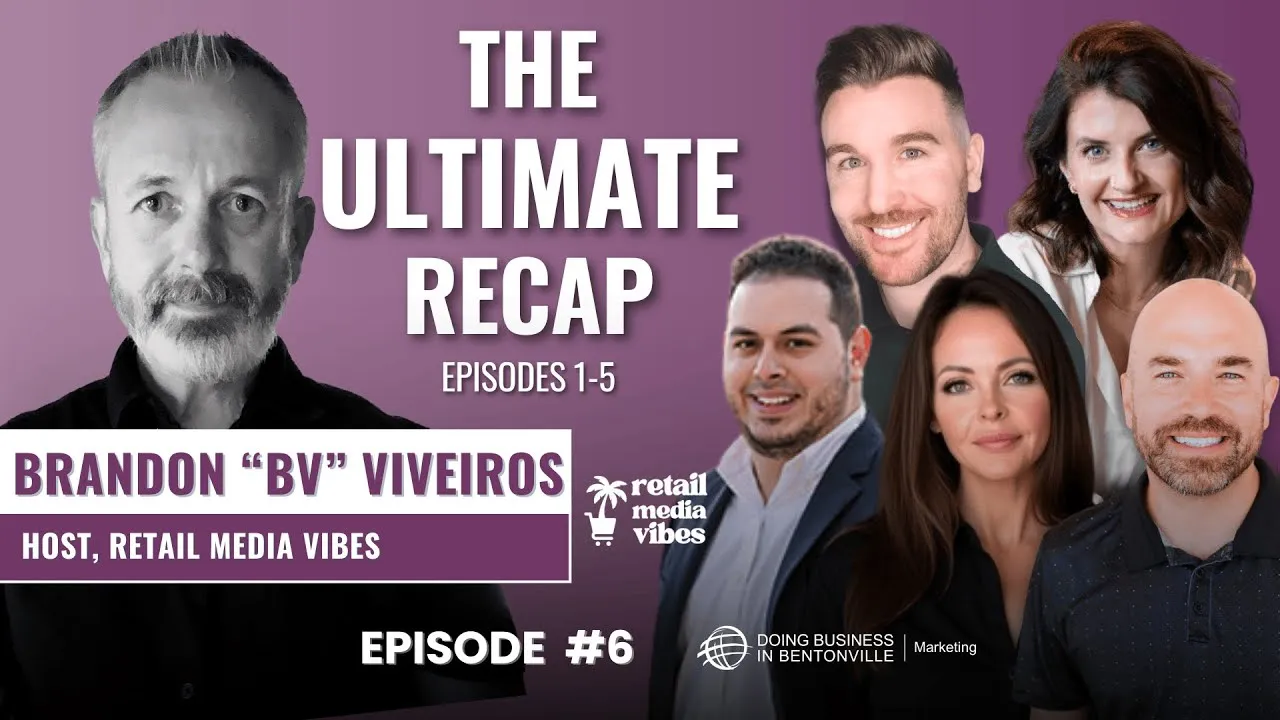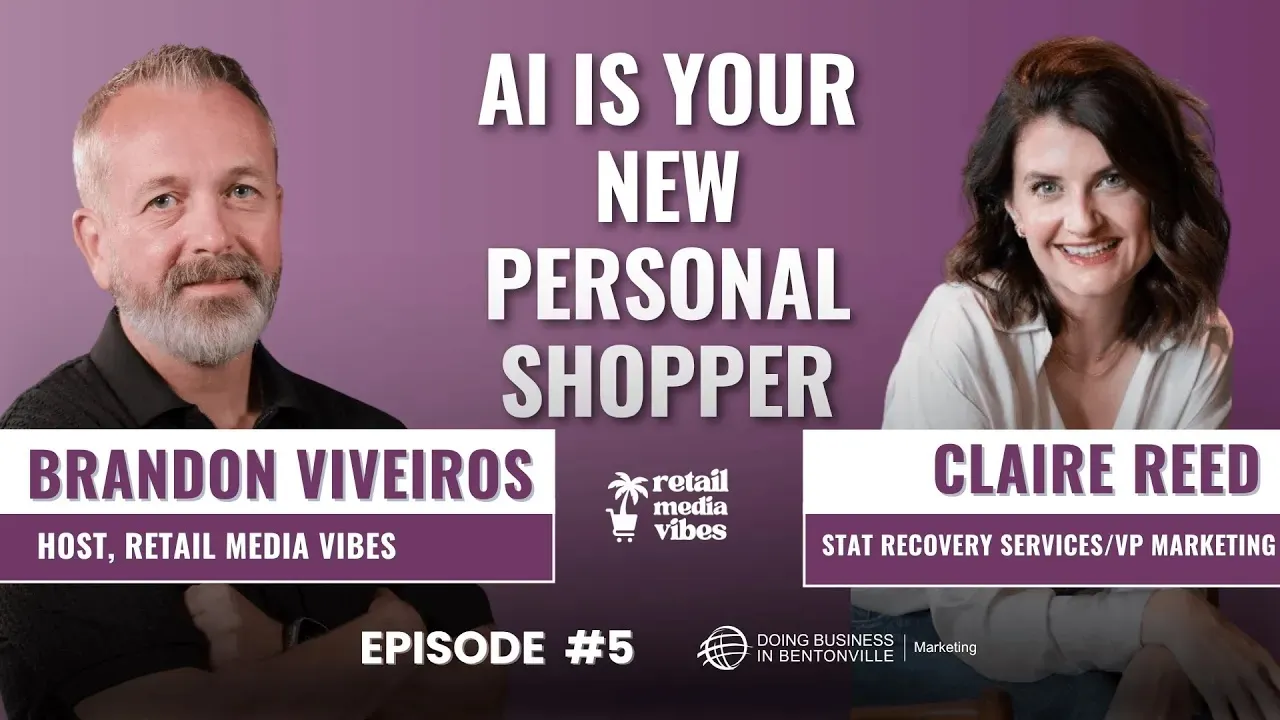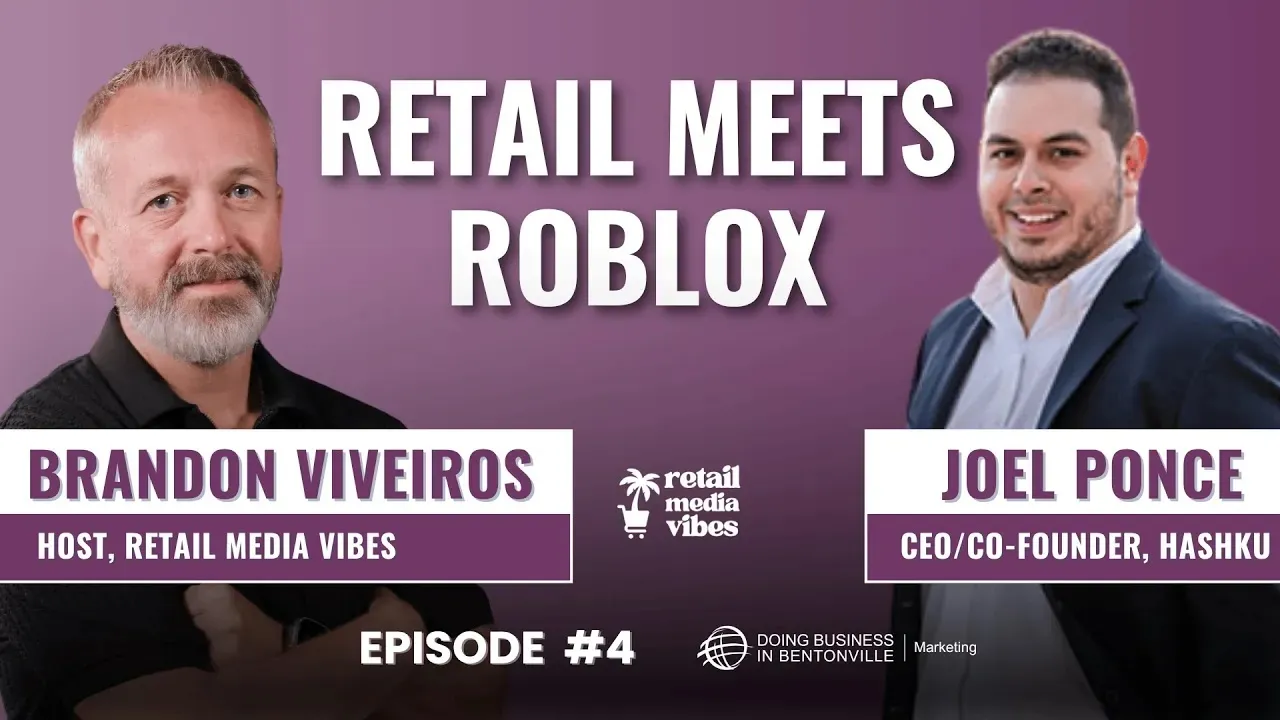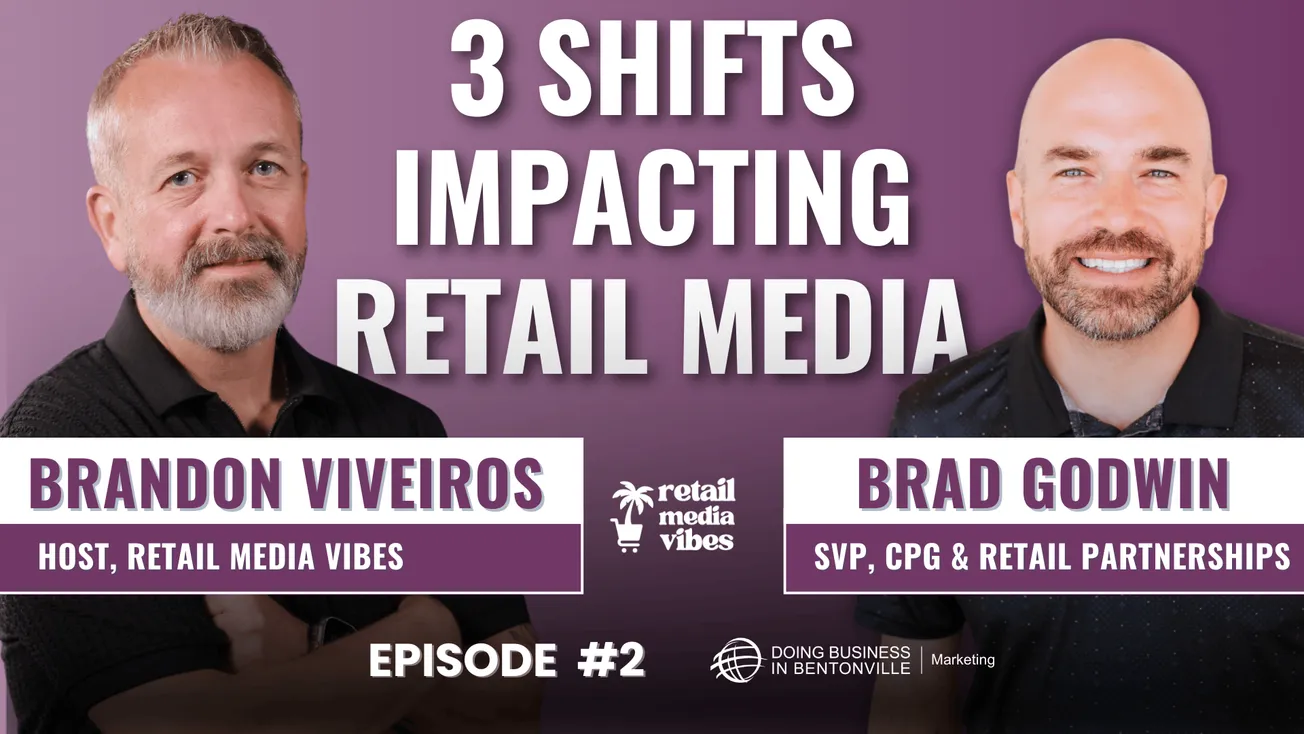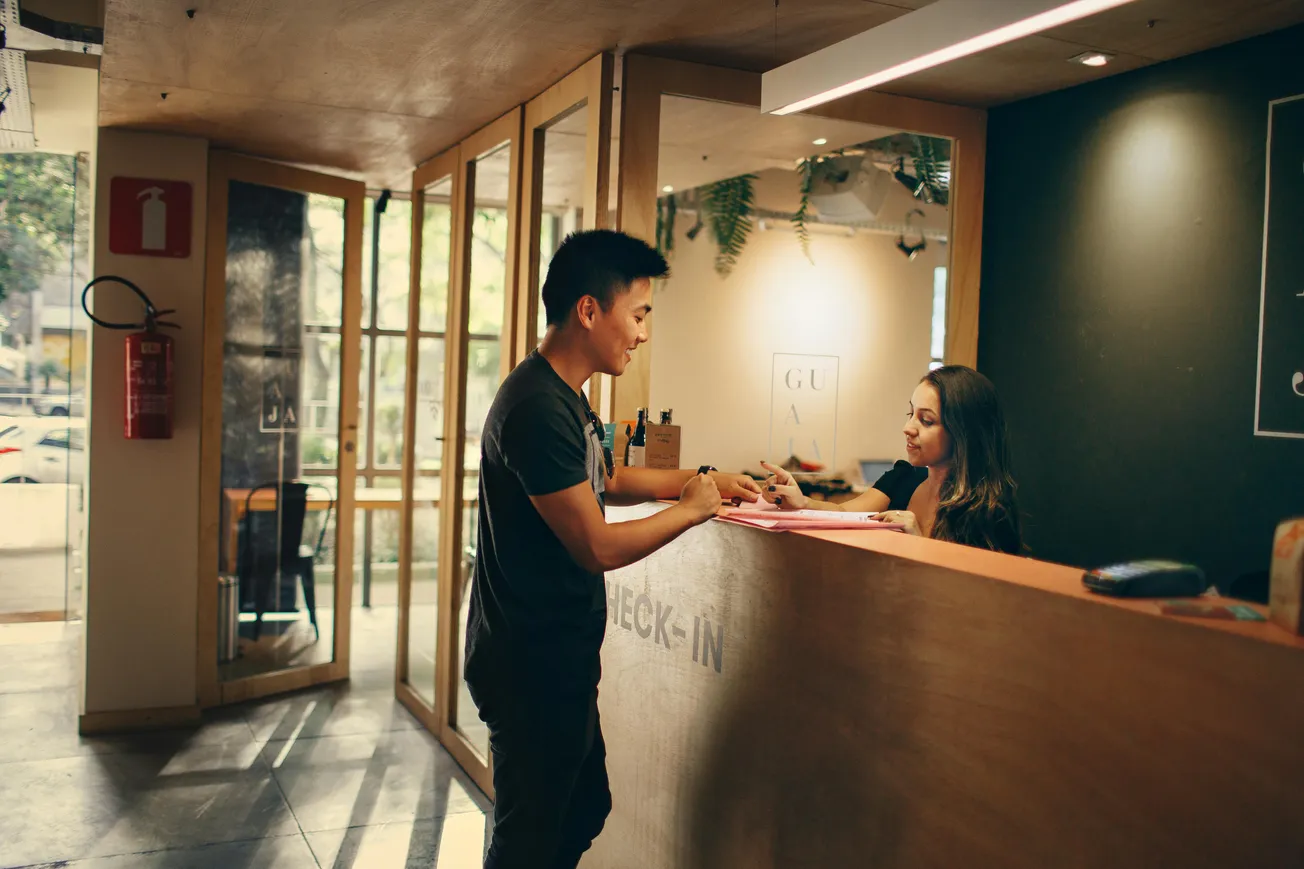Missed the first five episodes? We stitched the best insights into one high-energy tour through what’s actually moving shoppers and budgets right now. From Halloween arriving in July to AI that can buy for you, we dig into the hits, the misses, and the money-makers.
We kick off with Summerween, where retailers extend the season and capture early spend without feeling forced. Then we shift to agentic shopping—the idea that AI agents handle the repetitive, low-risk purchases and increasingly the shortlist for bigger ones. Trust, transparency, and clear opt-ins will drive adoption this holiday season, and we share the guardrails that make it work. The brand-versus-shopper debate gets a fresh look through the lens of first-party data at scale: why building brands inside retail ecosystems can accelerate conversion and loyalty when done right.
Connected TV steals the spotlight with surging retail media investment and the promise of closing the loop. We talk about when shoppable overlays beat the scroll and how to design incentives that overcome second-screen distraction. On measurement, we tackle the ROAS trap and lay out a practical stack: incrementality, retailer attribution, MMM, and KPI alignment by tactic. The gaming segment explores safe, authentic ways to show up—native integrations, limited digital items, and digital-physical twins that create real value without breaking immersion.
We round it out with store tech that actually helps—think app-first wayfinding and contextual offers over expensive cart hardware—and a reality check on “work slop,” or AI output that creates rework when nobody owns accuracy. For dessert, we break down hype marketing that lasts: smart collabs, limited drops, and timing that feeds long-term loyalty. Ready to retool your retail media playbook before the holidays? Listen, share with a teammate, and tell us your boldest prediction. If you’re enjoying the show, subscribe, leave a quick review, and pass this episode to someone who loves both strategy and sell-through.
More About this Episode
Retail Media’s New Reality and What Today’s Trends Mean for Modern Commerce
Retail is moving faster than ever, and the conversations happening across the industry reflect a marketplace reshaped by culture, technology and shifting consumer expectations. Across the first episodes of the show, several themes kept emerging. Retailers are learning how to rethink the commercial calendar. AI is challenging long held assumptions about how people discover and purchase products. Measurement is undergoing rapid transformation. Shopper behavior inside stores and inside virtual environments is evolving at the same time. Brands are responding with attempts to balance hype, loyalty, creativity and operational discipline.
This article brings those threads together for a business audience that relies on retail media to drive growth. It reflects not only what guests on the show shared but also what leaders across the industry are navigating in real time.
How Summerween Signals a New Commercial Calendar
One of the clearest signals of change appears in the growing phenomenon of Summerween. Sales data shows that Halloween shoppers have moved their activity much earlier in the year. Nearly half now begin purchasing before October, and last year the holiday generated more than eleven billion dollars in sales.
Retailers are responding by putting out Halloween inventory in midsummer. You can walk into a home improvement store in August and see towering zombies and full aisles of decor. The instinct might be to dismiss this as a novelty, but the reality is more strategic. When a passionate category has an extended window, brands have more opportunities to capture demand before competitors do.
The lesson for business leaders is to evaluate seasonal extensions through the lens of authenticity and relevance. Categories that naturally align with a moment can enter the space early. Others need a more thoughtful approach because shoppers identify inauthentic participation quickly. The real opportunity lies in planning for cultural acceleration. When shoppers express early enthusiasm and social platforms amplify that enthusiasm at scale, retailers can unlock incremental revenue by meeting the moment with the right balance of merchandising and media.
AI, Agentic Shopping and the Shifting Definition of Convenience
The next significant trend shaping retail is agentic shopping. This refers to the use of AI agents that can discover, compare and purchase products automatically based on a shopper’s preferences. The technology is still in early adoption phases, but it is developing quickly. Consumers already use AI for discovery, but the transition toward allowing AI to complete transactions will require more trust and familiarity.
Patterns from past technology shifts offer helpful context. People once resisted biometric unlock features on phones. Over time, convenience outweighed discomfort and adoption accelerated. The same story will likely unfold with agentic shopping. Shoppers will start with low risk categories such as household essentials and then consider more complex missions once they experience consistent value.
Businesses exploring AI driven shopping should focus first on tasks that remove real friction. Tools that meaningfully reduce decision fatigue, improve comparison accuracy or prevent purchase errors will win early trust. Companies that deploy AI simply because it is novel risk creating more noise than value. The audience for retail media today includes both early adopters and those who need proof, so careful testing and clear communication matter.
When Technology Creates Value and When It Does Not
Not every attempt to integrate AI into the retail experience produces a positive outcome. AI driven drive through systems in the quick service restaurant industry illustrate this challenge. In theory, these systems provide speed and efficiency. In practice, if the order accuracy is not reliable, the technology can damage trust and create operational headaches. These efforts often generate publicity, and that publicity sometimes becomes part of the strategy. Still, the long term viability depends on customer experience, not short lived attention.
On the other hand, technologies that directly address a shopper pain point tend to find traction more easily. The avocado ripeness scanner introduced by a major UK retailer is a simple example. It solves a clearly defined problem that many shoppers face, and it aligns with the retailer’s focus on quality and freshness. When innovation helps shoppers make better decisions with less risk, adoption becomes natural.
Business professionals should evaluate new technologies with a clear framework. Identify the shopper problem being solved. Determine whether the innovation reduces friction instead of adding to it. Consider the long term operational cost and whether the value aligns with that cost. This approach prevents a technology first mindset and supports a customer first mindset.
The Talent and Measurement Gap Inside Retail Media
Retail media has expanded quickly and the talent pipeline has struggled to keep pace. A modern retail media practitioner needs to understand data, creative, finance, activation and the realities of in store execution. Organizations cannot rely on talent falling from the sky. Leaders must build structured learning pathways that accelerate development and create consistency across functional teams.
Measurement is an even more complex challenge. For years the industry defaulted to ROAS because it was familiar and easy to communicate. While ROAS can be helpful for directional insights, it rarely reflects true impact. It counts every sale that happens during a campaign rather than separating incremental behavior from predictable behavior. It also varies widely across retailers because each platform measures slightly differently.
Incrementality needs to become the core metric, although getting there requires more nuance. Studies must account for cross retailer shifts, omnichannel behavior and varied inventory realities. A brand that wins on one platform may not show lift on another simply because of store supply patterns. This makes context essential.
Another challenge arises when teams confuse campaign objectives with media objectives. A campaign may seek to build household penetration. Individual tactics may focus on reach, conversion or digital shelf strength. Those tactics are not contradictory as long as they support the overarching business goal. Leadership teams who do not draw that distinction often fall into the trap of optimizing for the wrong metric.
Connected TV highlights the importance of better measurement. CTV spend through retail media networks is accelerating quickly because of the combination of scale, data and closed loop insight. Brands can reach specific audiences in premium environments and then evaluate downstream impact. The key is to look beyond immediate response. The questions should focus on household influence, sustained lift and comparative efficiency. Those are the metrics that drive long term brand growth.
The Expanding Landscape of Shopper Engagement
As retail media grows, the places where shoppers engage with brands continue to multiply. Gaming represents one of the most overlooked opportunities. Time spent in gaming environments matches or exceeds time spent on social media for many demographics. The stereotype of the gamer has shifted. Players range from children to parents to retirees. Mobile games alone reach a massive cross generational audience.
Brands can enter gaming in several ways. Immersive platforms like Roblox and Fortnite offer awareness and engagement at an impressive scale. Some platforms now offer immersive commerce that links virtual discovery with physical purchase. The value of digital items should not be underestimated. Young consumers often invest in virtual clothing or accessories because their avatars receive more visibility than their real life outfits. Limited edition items within these environments also carry social capital.
Inside physical stores, innovation continues. Smart carts that scan items, weigh produce and provide real time offers create both shopper value and retailer data. These carts are expensive, and the long term path may involve using the shopper’s phone to deliver most of the experience. Regardless of the hardware, the principle remains the same. If technology improves wayfinding, reduces errors or strengthens loyalty, it deserves serious consideration.
Retailtainment efforts are also evolving. Bringing a digital concept like a personalized content feed into the physical world through traveling brand experiences allows retailers to meet younger shoppers on their own cultural terms. These events are not immediate sales drivers. They are long term brand building investments that influence affinity and repeat engagement. Leaders who evaluate these initiatives only through short term sales metrics will miss their broader impact.
The Role of Hype Culture and Limited Edition Strategy
Hype culture continues to shape what people buy and talk about. Limited editions, surprise reveals and cultural collaborations can create rapid spikes in attention. When these strategies align with the brand purpose and the audience’s interests, they produce powerful results. When they feel random, they can disappoint quickly.
Several principles guide effective hype marketing. The product must be strong. The partnership must make sense to the audience. The timing must align with cultural energy. The value cannot end with the initial purchase because brands need to convert hype driven trials into repeat buyers. A brand that sees a surge during a collaboration but cannot retain those customers will find itself chasing the next hype cycle without building equity.
What the Next Era of Retail Media Requires
Looking ahead to the coming holiday season and beyond, shopping behavior will continue to evolve. AI will provide guidance and reduce the mental load on shoppers. Live shopping will remain part of the mix but will compete with more intelligent tools that provide faster answers. Experiences and subscriptions will attract consumers who want meaningful or ongoing value instead of more physical items.
Retailers and brands that navigate this complexity successfully will do so by balancing three forces.
They will innovate with purpose rather than novelty.They will measure impact in ways that reflect true business results.They will understand culture deeply enough to show up where shoppers actually spend their time.
The pace of change in retail media is not slowing. For business professionals, this is a moment to lean in, build capability and approach the future with curiosity rather than hesitation. The organizations that thrive will be the ones that understand both the vibes of culture and the fundamentals of commerce and treat them as partners rather than opposites.


